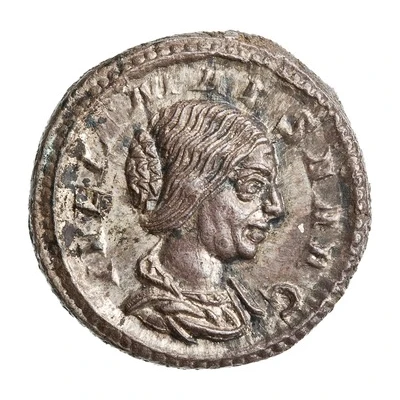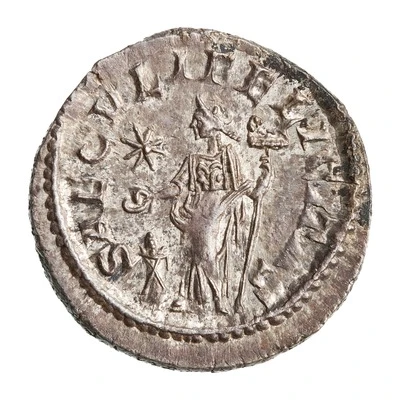


© American Numismatic Society (ANS)
Quinarius - Julia Maesa SAECVLI FELICITAS; Felicitas
| Silver | 1.7 g | 14.5 mm |
| Issuer | Rome › Roman Empire (27 BC - 395 AD) |
|---|---|
| Emperor | Elagabalus (Sextus Varius Avitus Basianus) (218-222) |
| Type | Standard circulation coin |
| Years | 218-222 |
| Value | Silver Quinarius (¼) |
| Currency | Antoninianus, Reform of Caracalla (AD 215 – 301) |
| Composition | Silver |
| Weight | 1.7 g |
| Diameter | 14.5 mm |
| Shape | Round (irregular) |
| Technique | Hammered |
| Orientation | Variable alignment ↺ |
| Demonetized | Yes |
| Updated | 2024-10-05 |
| Numista | N#276941 |
|---|---|
| Rarity index | 97% |
Reverse
Felicitas, draped, standing left, sacrifcing with patera in right hand over lighted altar and holding long caduceus in left hand; in left field, star.
Script: Latin
Lettering: SAECVLI FELICITAS
Unabridged legend: Saeculi Felicitas.
Translation: Age of good fortune.
Comment
Mass varies: 1.57–1.8 g;Example of this type:
American Numismatic Society (ANS)
Source:
Online Coins of the Roman Empire (OCRE)
Interesting fact
One interesting fact about the Quinarius - Julia Maesa coin is that it features an image of Felicitas, the Roman goddess of good luck and prosperity, on one side, while the other side bears the image of Julia Maesa, the grandmother of the emperor Elagabalus, who was a powerful woman in her own right and played a significant role in Roman politics during her time.